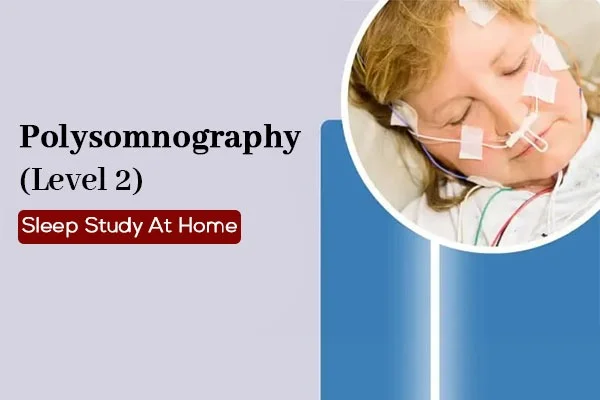
Understanding Polysomnography Level-2: A Comprehensive Guide to Home Sleep Studies
Sleep is a fundamental pillar of health, influencing everything from cognitive function to cardiovascular health. Yet, many people suffer from sleep disorders that go undiagnosed, impacting their quality of life and overall well-being. At Sleep Study at Home, we are committed to providing comprehensive and convenient solutions for diagnosing sleep disorders. Our team of leading pulmonologists and cardiologists offers state-of-the-art polysomnography Level-2 studies in the comfort of your home.
What is Polysomnography Level-2?
Polysomnography (PSG) is a type of sleep study that records various physiological parameters during sleep. It is used to diagnose a range of sleep disorders, including obstructive sleep apnea (OSA), central sleep apnea, restless legs syndrome, and insomnia. Polysomnography Level-2 is a comprehensive, yet less invasive, version of the traditional in-lab sleep study (Level-1 PSG). It offers a balanced approach, providing detailed data while allowing patients to sleep in their own beds.
Key Components of Polysomnography Level-2
Polysomnography Level-2 involves the use of a portable monitoring device that tracks several physiological signals. Here are the primary components monitored during the study:
Before delving into the world of sleep studies, let's first understand why sleep is crucial for our health:
- Electroencephalogram (EEG): Measures brain wave activity to determine the different stages of sleep.
- Electrooculogram (EOG): Tracks eye movements, which helps identify REM (rapid eye movement) sleep.
- Electromyogram (EMG): Records muscle activity, particularly in the chin and legs, to detect movements that may indicate sleep disorders.
- Electrocardiogram (ECG): Monitors heart rate and rhythm, providing insights into cardiovascular health during sleep.
- Respiratory Channels: Measures airflow through the nose and mouth, and tracks chest and abdominal movements to detect breathing irregularities.
- Pulse Oximetry: Monitors oxygen saturation levels in the blood, crucial for identifying conditions like sleep apnea.
- Snore Microphone: Captures sound to identify snoring patterns.
Benefits of Home-Based Polysomnography Level-2
Opting for a home-based polysomnography Level-2 study offers several advantages:
Before delving into the world of sleep studies, let's first understand why sleep is crucial for our health:
- Comfort and Convenience: Patients can sleep in their own beds, ensuring a more natural sleep environment. This can lead to more accurate results compared to an unfamiliar laboratory setting.
- Cost-Effectiveness: Tracks eye movements, which helps identify REM (rapid eye movement) sleep.
- Accessibility: Patients who live in remote areas or have mobility issues can benefit from the convenience of a home sleep study.
- Timely Diagnosis: Early detection and treatment of sleep disorders can prevent complications and improve overall health.
Preparing for a Home Sleep Study
To ensure accurate results, proper preparation is essential. Here are some tips to prepare for your polysomnography Level-2 study:
- Follow Your Normal Routine: Try to maintain your regular sleep schedule in the days leading up to the study.
- Avoid Caffeine and Alcohol: Both substances can affect sleep patterns and should be avoided on the day of the study.
- Shower and Remove Makeup: Clean skin helps ensure the electrodes adhere properly.
- Wear Comfortable Clothing: Opt for loose-fitting pajamas to avoid discomfort during the study.
The Procedure: What to Expect
On the day of the study, you will receive a portable monitoring device along with detailed instructions on how to use it. Here’s a step-by-step overview of the procedure:
- Setting Up the Equipment: You will be guided on how to place the sensors and electrodes correctly. This usually involves attaching sensors to your scalp, face, chest, and limbs.
- Sleeping with the Device: Once everything is set up, you can go to bed as usual. The device will record your physiological parameters throughout the night.
- Data Collection: The recorded data is stored in the device and can be easily uploaded to a secure platform for analysis.
- Return the Device: After the study, you will return the device to our team for analysis.
Analysis and Diagnosis
Our team of experienced pulmonologists and cardiologists will analyze the data collected during the study. They will look for patterns and abnormalities in your sleep stages, breathing, heart rate, and oxygen levels. Based on the findings, a comprehensive report will be generated, detailing any diagnosed sleep disorders and recommending appropriate treatment options.
Common Sleep Disorders Diagnosed with Polysomnography Level-2
Here are some common sleep disorders that can be diagnosed through a polysomnography Level-2 study:
- Continuous Positive Airway Pressure (CPAP): A common treatment for OSA that keeps the airway open using mild air pressure.
- Lifestyle Changes: Weight loss, smoking cessation, and reducing alcohol intake can significantly improve sleep quality.
- Medications: For certain sleep disorders, medications may be prescribed to help manage symptoms.
- Cognitive Behavioral Therapy for Insomnia (CBT-I): A structured program that helps patients develop healthier sleep habits and overcome insomnia.
Conclusion
Polysomnography Level-2 offers a convenient and effective way to diagnose sleep disorders from the comfort of your home. At Sleep Study at Home, we are dedicated to helping you achieve better sleep health through advanced diagnostic tools and expert care. By understanding and addressing your sleep issues, you can improve your overall quality of life and well-being. If you suspect you have a sleep disorder, don’t hesitate to contact us and schedule your home sleep study today.
For more information, visit our website. Our team of leading pulmonologists and cardiologists is here to support you on your journey to better sleep health.
